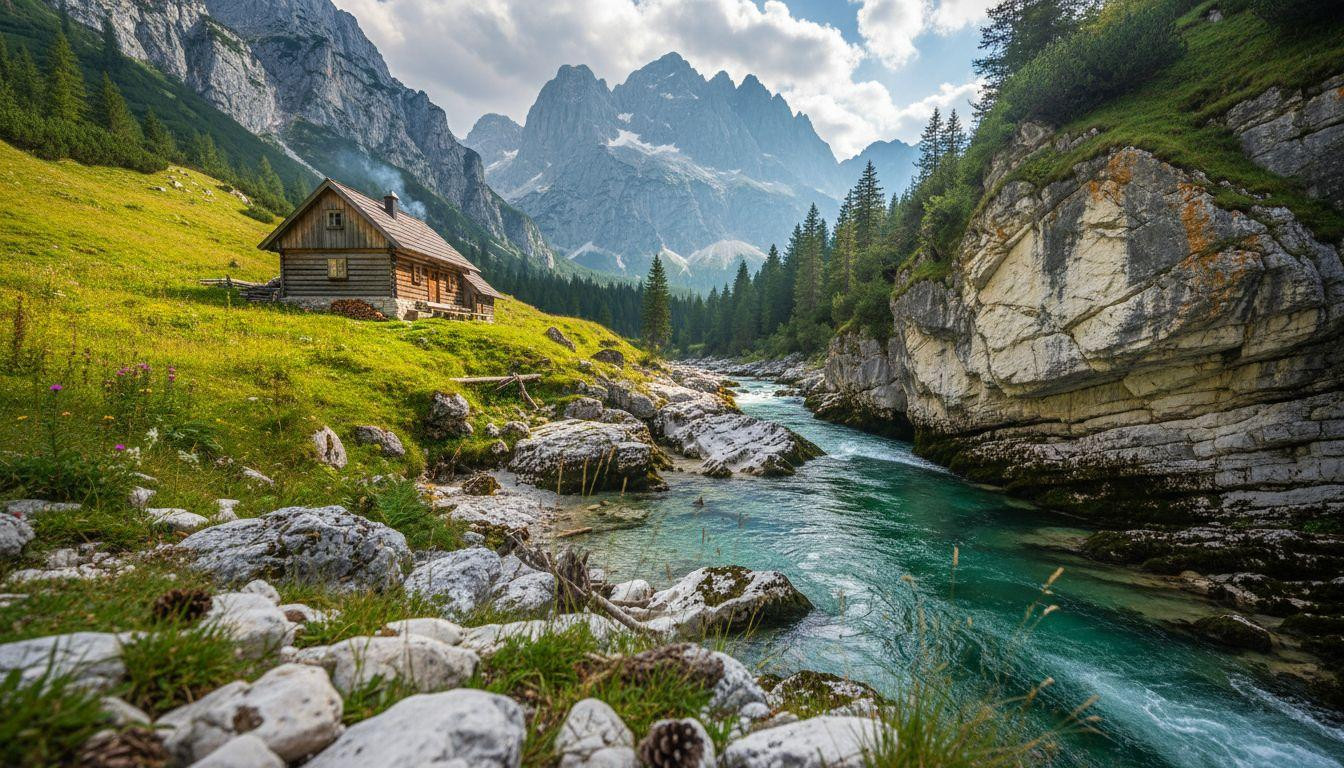Switzerland’s mountain huts charge $107 per night while Slovenia’s cost just $49. That simple math reveals why smart hikers bypass crowded Swiss trails for Triglav National Park. The emerald waters of Lake Bled reflect limestone peaks that rival the Matterhorn. Yet Slovenia delivers this alpine magic at 62% less cost.
In 2025, Slovenia’s Julian Alps offer everything Switzerland promises. Turquoise lakes mirror snow-capped summits. Stone villages nestle between pine forests and meadows. The difference lies in your wallet and the silence on the trails.
Why Swiss Alps drain your budget
Zermatt hotels demand $400-600 nightly during summer. A family meal costs $50-80 per person in Interlaken. Mountain transport alone exceeds $130 daily when cable cars and trains connect peaks. The Jungfraujoch excursion costs $716 for five people, even with Swiss Travel Pass discounts.
Switzerland hosts 12 million alpine visitors annually. Queues form at 6am for popular cable cars. Trail parking fills by sunrise in peak season. The commercialization transforms wilderness into theme park experiences where nature becomes secondary to infrastructure.
Hidden fees multiply quickly. Alpine passes cost $45-180 daily for trail access. Mountain hut reservations require booking months ahead at premium rates. Restaurant meals demand $30-50 per person in remote locations where captive audiences pay inflated prices.
Slovenia’s Triglav delivers authentic alpine beauty
Triglav National Park spans 340 square miles without entrance fees. The Soča River cuts emerald channels through limestone gorges that photographers struggle to capture accurately. This gorge where 1 meter width drops 80 meters into emerald water demonstrates Slovenia’s commitment to preserving wilderness over profit.
Lake Bled and Julian Alps access
Lake Bled sits just 35 minutes from Ljubljana airport via $6 bus routes. The fairy-tale island church rises from turquoise waters beneath Bled Castle’s medieval walls. Triglav’s 9,396-foot summit dominates the northern horizon, accessible through well-maintained trails that cost nothing beyond transportation.
Real cost comparisons prove the savings
Mountain huts in Slovenia average $49 nightly including meals. Swiss Alpine Club huts charge $107 for equivalent accommodation. Weekly hiking trips cost $565 in Slovenia versus $1,485 in Switzerland. Transportation to trailheads costs under $10 via local buses rather than $130+ daily Swiss mountain transport.
The hiking experience Slovenia delivers
Triglav National Park maintains 6,200 miles of marked trails. The Krma Valley route to Triglav summit covers 7.1 miles one-way with 6,414 feet elevation gain. Limestone paths provide excellent grip compared to Swiss granite trails showing heavy wear from overtourism.
Prime hiking season without crowds
June through September offers ideal conditions with daytime temperatures reaching 75°F. Alpine meadows bloom with wildflowers while snow caps remain visible on northern faces. Slovenia receives 5 million annual visitors compared to Switzerland’s 12 million, ensuring quieter trails and authentic mountain experiences.
Local cuisine at honest prices
Mountain huts serve traditional potica (nut roll) and kranjska klobasa (sausage) for $10-20 meals. Family-run establishments welcome hikers with genuine hospitality rather than corporate efficiency. Local brewing traditions produce craft beers that complement hearty alpine fare at reasonable prices.
Slovenia’s community stewardship model
Local volunteer brigades maintain 65% of Slovenia’s 500-mile trail network. This community ownership preserves authentic mountain culture where 42% of Slovenians climb Triglav at least once in their lifetime. The mountains belong to everyone rather than tourism corporations.
Recent visitor surveys conducted in 2025 reveal 87% of Slovenia’s mountain accommodations meet sustainable tourism certification. This community-first approach creates authentic connections between travelers and local traditions that commercialized Swiss resorts struggle to maintain.
Your questions about Slovenia’s Triglav Alps answered
How do transportation costs compare realistically?
Ljubljana to Lake Bled costs $6 by bus versus $85 daily Swiss Travel Passes. Local buses reach major trailheads for under $10 total. Car rentals cost 40% less in Slovenia with easier parking at trailheads that remain free rather than demanding premium fees.
What about language barriers and tourist infrastructure?
Tourism industry workers in Slovenia achieve 90% English proficiency compared to 65% in German-speaking Swiss regions. Trail signage appears in multiple languages. Tourist information centers staff provide detailed hiking advice without sales pressure for expensive excursions or premium services.
How does alpine scenery actually compare between regions?
Both regions deliver classic alpine postcard views with limestone peaks, turquoise lakes, and flower-filled meadows. Slovenia’s emerald rivers and less-developed valleys offer unspoiled beauty that matches Switzerland’s grandeur without the crowds or corporate infrastructure dominating the experience.
Dawn breaks over Lake Bled as morning mist reveals Triglav’s jagged peak. The only sounds emerge from gentle water lapping and distant cowbells. This authentic alpine moment costs half what Switzerland charges for similar magic.
